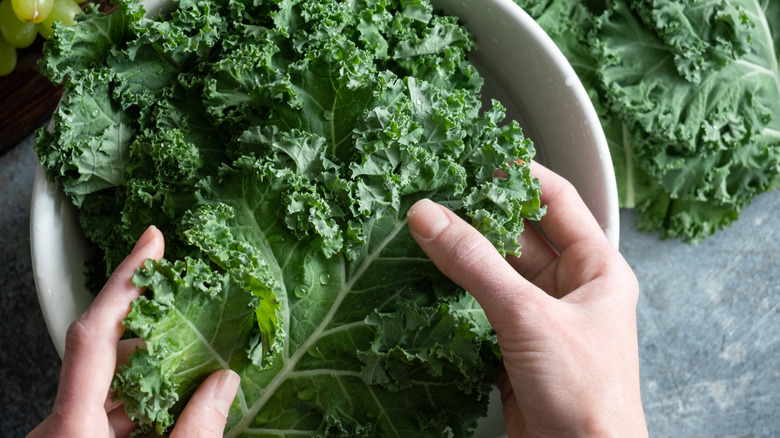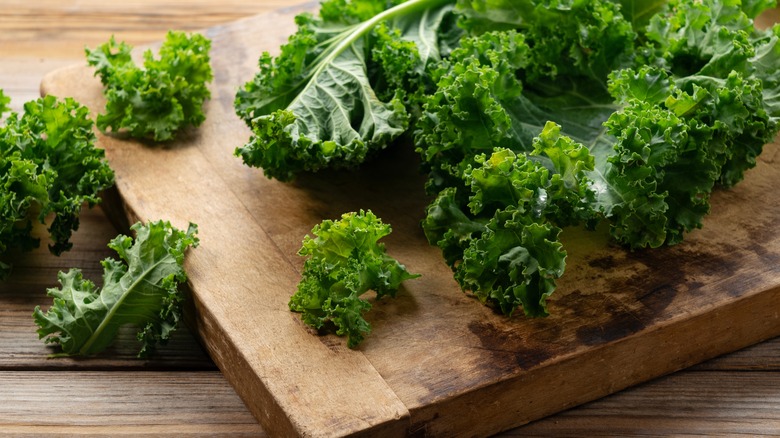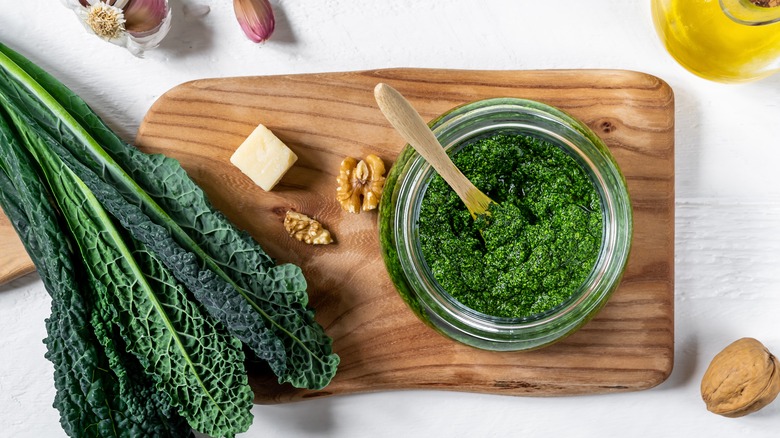Here's How To Thaw Frozen Kale For The Best Results
Kale is one of the most vitamin-packed nutritional powerhouses you can eat. According to WebMD, these leafy greens contain a veritable who's who of nutrients, such as potassium, fiber, vitamins A, C, and K, calcium, copper, and manganese, among others. Plus, kale happens to be delicious and versatile. It's easy to incorporate into just about any meal, from salads to egg dishes like frittatas and even stews or casseroles.
With all of this mind, it never hurts to have some extra kale on hand, but what if you wind up with more greens than you know what to do with? Fortunately, kale freezes beautifully. The only tricky part is thawing your kale in a way that will ensure it's as delicious as the day you stashed it away.
While you can always grab a small amount of kale from the freezer and let it come up to temperature in the fridge, if you want to defrost a larger batch, try this simple trick: Fill a bowl with tepid water and sink your bag of frozen kale inside. This will gently yet effectively accelerate the defrosting process, and you'll be cooking your kale into your favorite recipes in no time.
How to freeze kale
Freezing kale is a simple process that requires little more than a zip-top bag and a few minutes of your time. The first step is to make sure you select fresh, good-quality kale that will stand up to the cold without wilting. This means searching for bunches that have a vivid green color, aren't soft or wilted, and are free from bruising or yellowing.
From there, wash your kale as you would if you were about to eat it. You'll want to dry it well with a paper towel or salad spinner, since lingering water droplets can turn to pesky ice crystals in the freezer. Trim the leaves from the stems (either discarding the stalks or using them for a stock), then place the greens in a freezer-safe zip-top bag.
To go a step further, blanching your kale before freezing it will help preserve the color of your produce, and also extract some of the natural bitterness of the stalks. This is an optional step, but it does extend the life of your frozen kale from about four weeks to up to a year. To blanch the greens, just boil them for one or two minutes and then plunge into an ice bath.
Uses for your frozen kale
While kale can be delicious in countless recipes, once it's been frozen and thawed, it's a little less than ideal to use in your favorite salad. It won't be quite as crisp and may hold on to some excess moisture. That said, there's no shortage of other applications for your defrosted veggie.
For a tasty side dish, cook down your kale in a simmered dish with cured pork and beans. You can even stretch it into a main dish by turning it into a superpowered pasta sauce. Use it in place of basil to make a kale pesto, or incorporate it into a pillowy ricotta kale gnudi recipe to serve with classic Italian tomato sauce. The thawed kale would also be great in a filling for healthy homemade calzones.
Frozen kale is also perfect for blending into a green drink to start the day. A tropical kale smoothie with mango, pineapple, and coconut water is especially energizing. And on the subject of mornings, if you really want to surprise your guests, smoothly blend kale into pancake batter, with some sweet ingredients to offset the vegetal taste. The fun green color might convince youngsters to eat their veggies, too.


